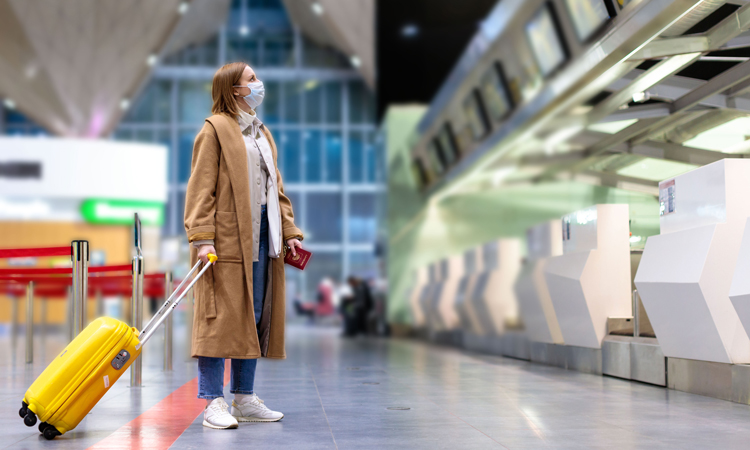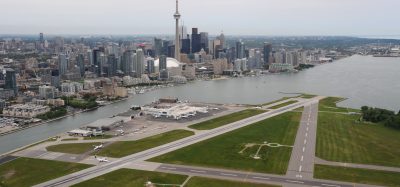EASA and ECDC issue updated Aviation Health Safety Protocol
- Like
- Digg
- Del
- Tumblr
- VKontakte
- Buffer
- Love This
- Odnoklassniki
- Meneame
- Blogger
- Amazon
- Yahoo Mail
- Gmail
- AOL
- Newsvine
- HackerNews
- Evernote
- MySpace
- Mail.ru
- Viadeo
- Line
- Comments
- Yummly
- SMS
- Viber
- Telegram
- Subscribe
- Skype
- Facebook Messenger
- Kakao
- LiveJournal
- Yammer
- Edgar
- Fintel
- Mix
- Instapaper
- Copy Link
Posted: 24 June 2021 | International Airport Review | No comments yet
The EASA/ECDC Aviation Health Safety Protocol has been updated in light of current scientific evidence and new European Union COVID-19 initiatives.


The European Union Aviation Safety Agency (EASA) and the European Centre for Disease Prevention and Control (ECDC) has issued a new version of the Aviation Health Safety Protocol (AHSP), providing clear operational guidance and risk-based recommendations for health-safe air travel to compliment the European Union’s (EU) initiatives, such as the EU Digital COVID Certificate.
The new version of the document takes into account new evidence and information, such as the circulation of coronavirus variants of concern (VOCs) and the rollout of COVID-19 vaccination programmes. The new version also emphasises the need to keep non-pharmaceutical measures in place – such as the wearing of medical face masks, hygiene measures and physical distancing. It is intended to provide support to national authorities in the Member States and aviation stakeholders, and is based on the latest scientific evidence, epidemiological situation and policy developments.
“We have reached a significant milestone in the pandemic: a real change in approach that can allow travellers to fly again without worrying excessively that the rules may change at short notice, complicating their journey or making it impossible,” said EASA‘s Executive Director, Patrick Ky. “The industry – and passengers – have been waiting for this moment for a long time. Thanks to the expert epidemiological input from ECDC, we are confident that this protocol offers practical and pragmatic guidelines for health-safe travel.”
In line with current scientific evidence and the European Council recommendation, the protocol proposes that people who are fully vaccinated against COVID-19 or who have recovered from the virus in the last 180 days should not be subject to testing or quarantine, unless they are coming from an area of very high risk or where a Variant of Concern is circulating.
For travel from such destinations, the requirement for a negative test could be considered. This could be either a Rapid Antigen Detection Test (RADT) taken no more than 48 hours before arrival, or a PCR test no more than 72 hours before arrival. Also, the use of Passenger Locator Forms to facilitate contact tracing is still considered very important.
In addition, physical distancing of at least one metre must be maintained and medical masks must be worn at all stages of the journey. Hand and respiratory hygiene measures also need to be observed. All of these measures are recommended for EU air travel, but also for air travel to and from third countries.
“The rollout of COVID-19 vaccination programmes has thankfully allowed for the relaxation of some measures for fully vaccinated travellers” said Andrea Ammon, ECDC’s Director. “But if measures are relaxed too soon for non-vaccinated people, then we may see a rapid rise in cases again. This is based on the current scientific evidence, as well as ECDC modelling predictions, which take into account the gradual relaxing of non-pharmaceutical measures, circulation of variants of concern and the rollout of vaccination programmes. In order to effectively control community transmission of the virus, we need to continue the roll-out of vaccinations and exercise caution until a sufficient proportion of the European population has received their vaccine.”
Emphasis should be placed on ensuring that the new elements of the protocol, such as the checking of proof of vaccination or recovery, should not create bottlenecks and queues in airport processes. The protocol recommends that the information should be checked once in each journey, ideally prior to arriving at the airport of departure. This should also be the case for transfer passengers.
The recommendations are non-binding for Member States. Nevertheless, it is hoped that countries across Europe will adopt its recommendations so as to ensure harmonisation and the safe recovery of the air transport and tourism sector. As part of the consultation process, the AHSP and the principles behind it were presented to the Health Security Committee and the members of the EU’s integrated political crisis response mechanism (IPCR), as well as National Aviation Authorities and EASA Advisory Bodies.
Six leading aviation associations – Airlines for Europe (A4E), Airports Council International Europe (ACI Europe), the AeroSpace and Defence Industries Association of Europe (ASD), the Civil Air Navigation Services Organisation (CANSO), the European Regions Airline Association (ERA) and the International Air Transport Association (IATA) – have welcomed the update to the COVID-19 Aviation Health Safety Protocol.
In a joint statement, the six associations said: “Protection of public health, including that of our staff and our passengers, continues to be aviation’s number one priority throughout this pandemic. Following successful vaccination programmes across Europe and an improved epidemiological outlook, these updated guidelines are very timely and will help to ensure a smooth and safe passenger journey. We are counting on EU Member States to now play their part and update the existing measures accordingly, so that passengers know what to expect. This is crucially important for restoring passenger confidence and to help our sector’s recovery.”
Related topics
Airport crisis management, Airside operations, COVID-19, Passenger experience and seamless travel, Safety, Terminal operations
Related organisations
AeroSpace and Defence Industries Association of Europe (ASD), Airlines for Europe (A4E), Airports Council International Europe (ACI Europe), Civil Air Navigation Services Organisation (CANSO), European Centre for Disease Prevention and Control (ECDC), European Council, European Regions Airline Association (ERA), European Union (EU), European Union Aviation Safety Agency (EASA), International Air Transport Association (IATA)


















